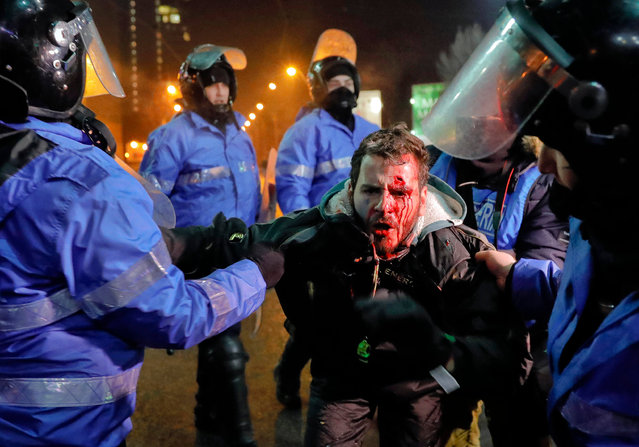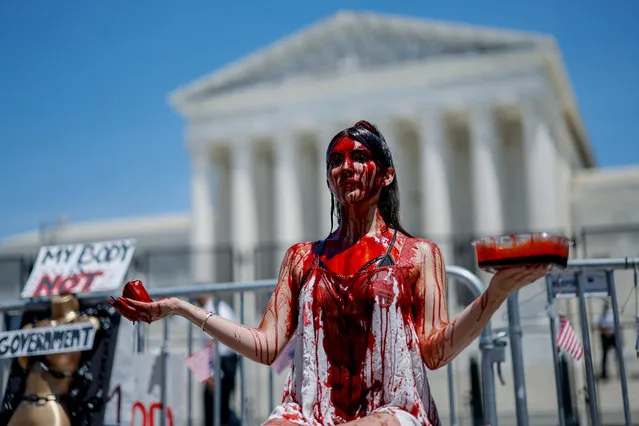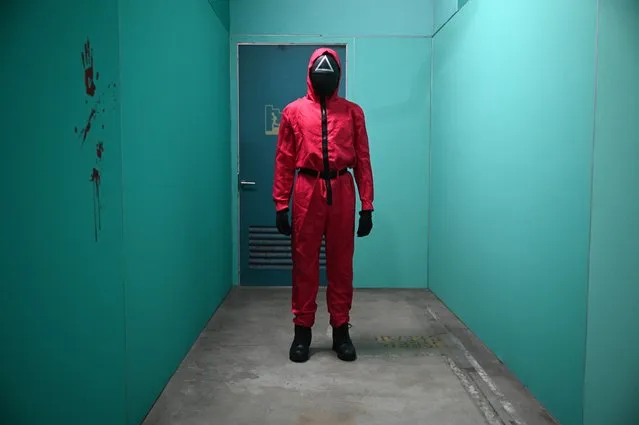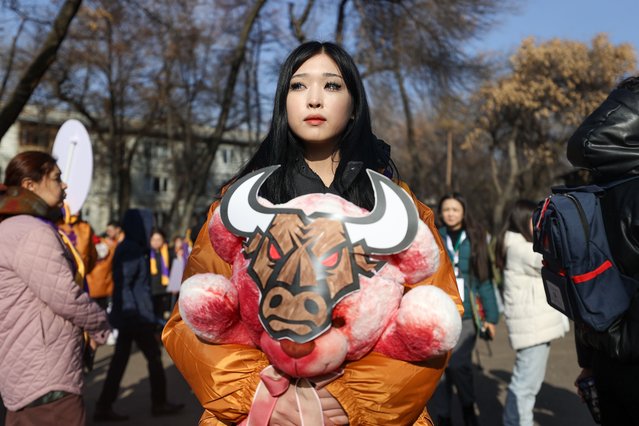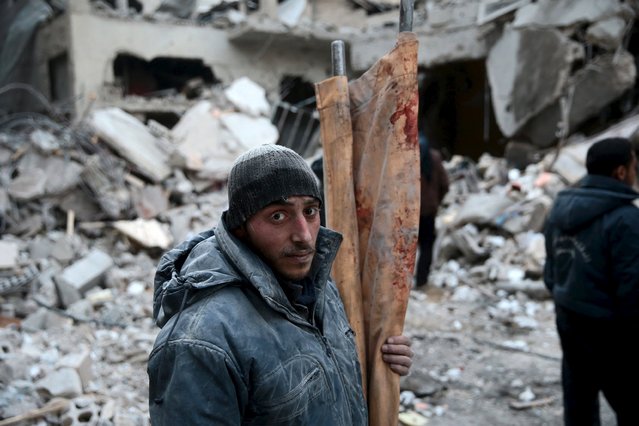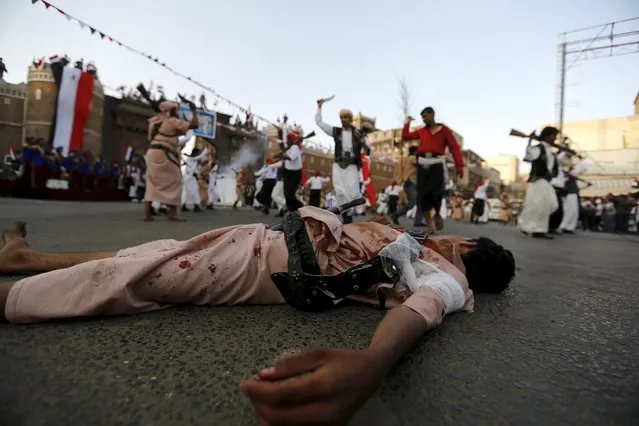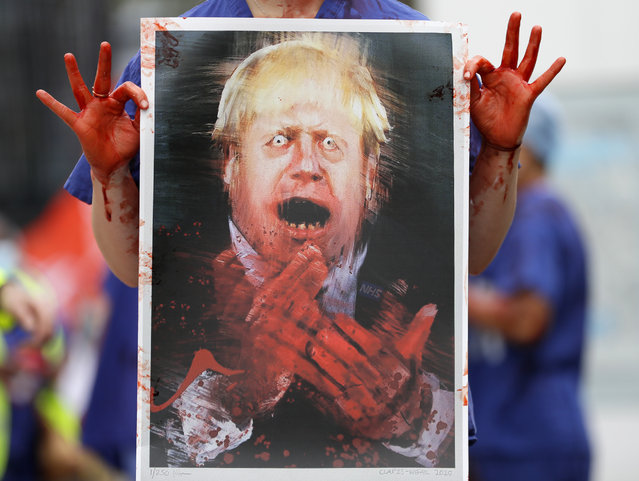
A nurse holds a painting of Prime Minister Boris Johnson clapping with blood on his hands as part of a demonstration of NHS workers at hospitals across London to demand a 15 per cent pay rise by the government in London, Wednesday, August 26, 2020.(Photo by Kirsty Wigglesworth/AP Photo)
28 Aug 2020 00:07:00,post received
0 comments

